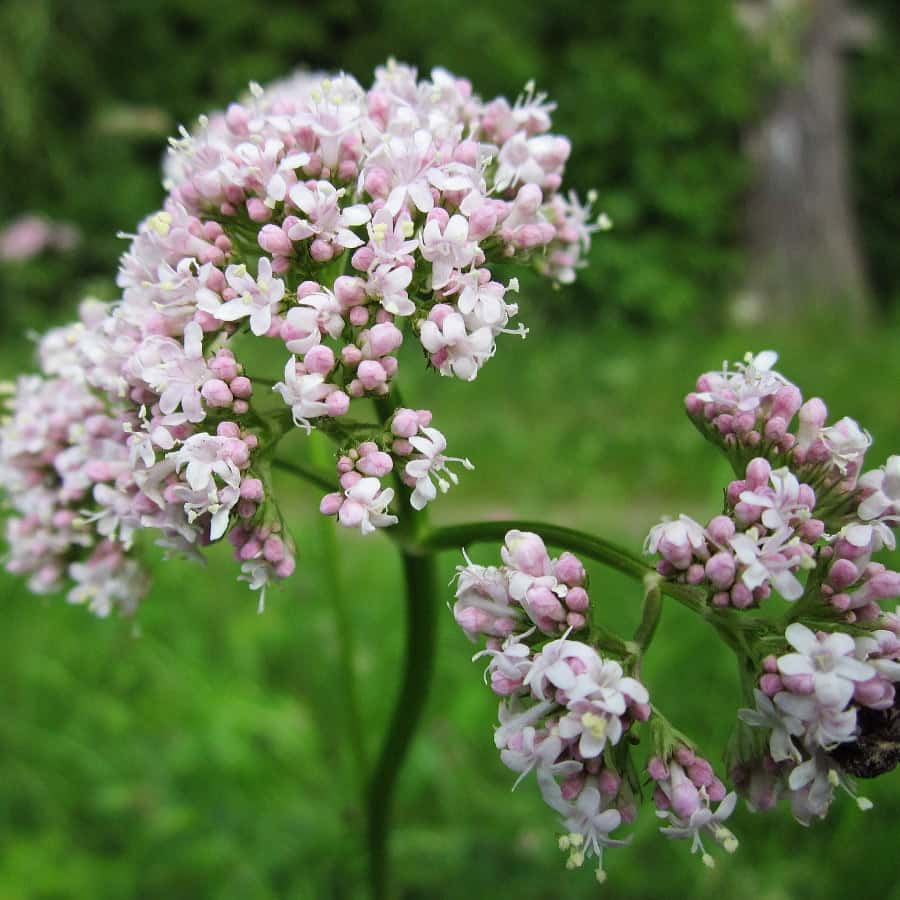
Valerian is a perennial plant that grows readily in Europe, North America, and northern Asia.
A number of related species have been used by herbalists throughout history, but the exact kinds and amounts of chemical constituents vary.
Valeriana officinalis is the plant used medicinally in Europe, and it has become popular in the United States for treating anxiety and insomnia.
This medcinial plant was used by the ancient Greeks to treat digestive problems such as flatulence and nausea. They also used it for urinary difficulties and to bring on a woman’s menstrual period. These uses-as a diuretic, topical pain reliever, and treatment for intestinal and menstrual cramps-predominated throughout the Middle Ages and up into the sixteenth century.
In medieval times, valerian was used in cooking to flavor stews and soups. It may have played a role in the tale of the Pied Piper. Dr. Varro E. Tyler has suggested that the fellow used aged valerian root, which smells like stinky cheese or dirty old socks, to lure the rats from Hamelin.
Michael Castleman went even farther in speculating that the Pied Piper may have used valerian on the children, presumably to quell any fears, before luring them away with his music.
By the eighteenth century, European herbalists were using valerian for many kinds of nervous disorders. During the 1800s it was especially popular for treating “vapors” in women, with symptoms ranging from “waves of heat and cold” to fear and panic.
The part of the plant used is the rhizome (“root”), which is generally harvested near the end of September when essential oil content is highest. The fresh root does not smell bad; the distinctive “old sock” aroma develops as the root dries.
Active Ingredients
Although chemists have isolated a number of compounds from valerian, no single “active ingredient” has been identified. The essential oil (up to 2 percent of the root) contains valeranone (10 to 21 percent of the oil) and other relatively constant components.
Dried valerian root also contains 0.3 to 0.9 percent of valerenic acid and related compounds.
A category of chemicals called valepotriates has been identified and studied for their activity. Of these, valtrate and isovaltrate seem to be the most relevant and may make up as much as 1 percent of the herb.
Uses of Valerian
Valerian root is used primarily as a mild sedative to calm restlessness and anxiety and overcome mild insomnia. At least two double-blind studies have demonstrated that valerian extract can significantly reduce the amount of time it takes people to fall asleep without changing the normal stages of sleep.
It is used in Europe as an antispasmodic, particularly for abdominal cramps due to nervousness and for uterine cramps and menstrual agitation.It is also used as a mild tranquilizer for people experiencing emotional stress, much as antianxiety drugs are prescribed, and has been prescribed for exhaustion.
Some herbalists have also recommended it for tension headaches, bronchial spasms, and lingering coughs.
Valerian has occasionally been tried as part of a program to take a patient off antidepressants or benzodiazepines, and the herb is sometimes used as a muscle relaxant to treat pain.
Dose
Dose varies with preparation and use. Total daily dose should not exceed 15 g plant material: 15 to 20 drops of tincture (1:5) in water, up to several times a day; or one cup of tea (made by steeping 1 teaspoon of valerian in a cup of hot water for ten minutes) twice a day and at bedtime; or 1 tablespoon of juice three times a day; or 450 mg of extract at bedtime.
Valerian extracts and tinctures should be kept in tightly closed containers away from light.
Special Precautions
Pregnant women should not take valerian.
Since valerian can promote urination, it may not be an appropriate sleep aid for those who must rise frequently to urinate during the night. It is not generally considered a good practice for a person to take sleeping pills when he or she must drive or operate complex machinery. The degree to which this caution may apply to valerian preparations is unclear.
Adverse Effects
Side effects are exceedingly rare. With prolonged use, headaches, insomnia, agitation, and changes in heart activity have been reported. It is not clear whether these reactions occurred while the person continued to take valerian root, or whether they might have been a response to sudden withdrawal.
One serious withdrawal reaction has been presented in the medical literature. A fifty-eight-year-old man with heart problems was admitted to the hospital for a biopsy. After the surgery, he developed cardiac complications and delirium, possibly as a consequence of sudden withdrawal from many years of self-treatment with fairly high doses of valerian root extract.
The crisis responded to benzodiazepine administration, pointing up how likely it is that valerian compounds affect the same receptors in the brain as do these anti-anxiety agents. The authors of the report suggest that patients should not discontinue valerian suddenly.
Test tube studies showing that some components of valerian, especially valepotriates, can be damaging to cells and genetic material raise concern. No one knows if long-term use of valerian is safe.
Possible Interactions
According to reports, valerian root does not interact in a dangerous way with alcohol. It does, however, interact with barbiturates and should not be coadministered.
Because of the possibility that the herb affects GABA receptors in much the same way benzodiazepines do, patients should be cautioned not to combine it with drugs such as Ativan, Valium, or Xanax.

